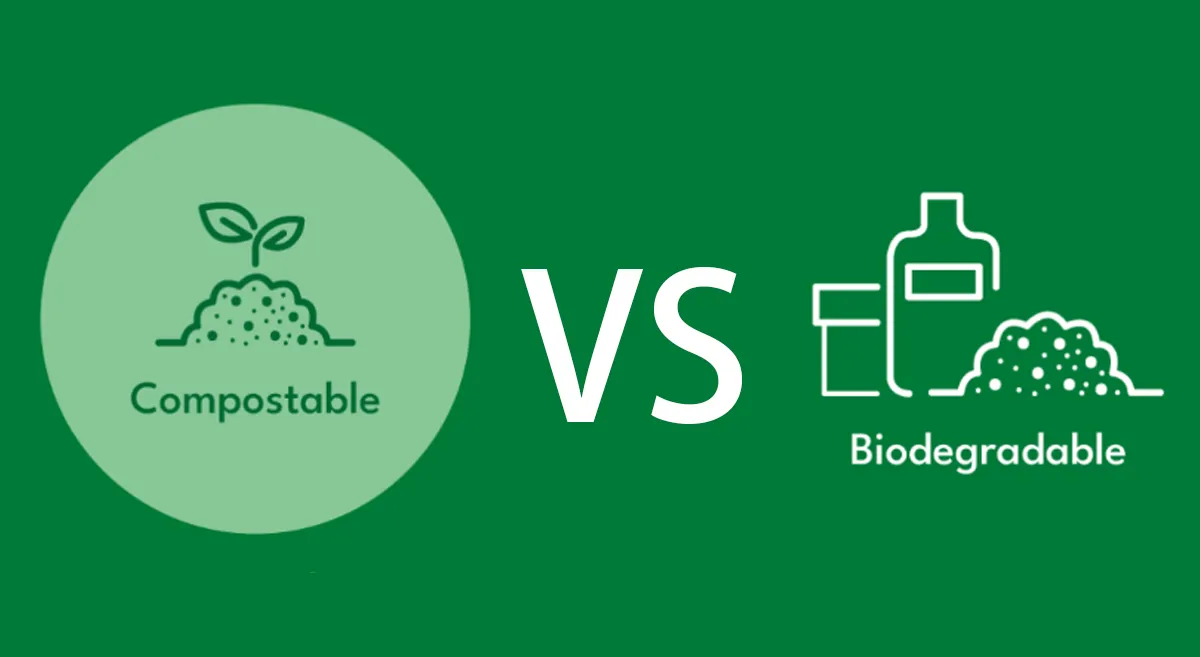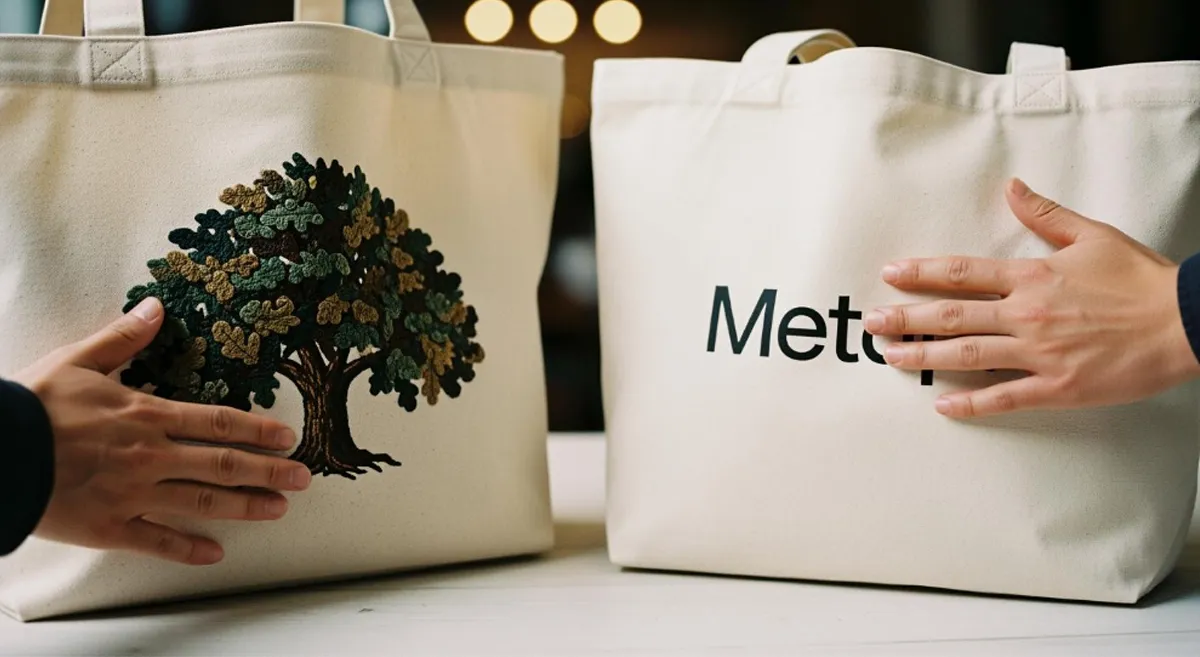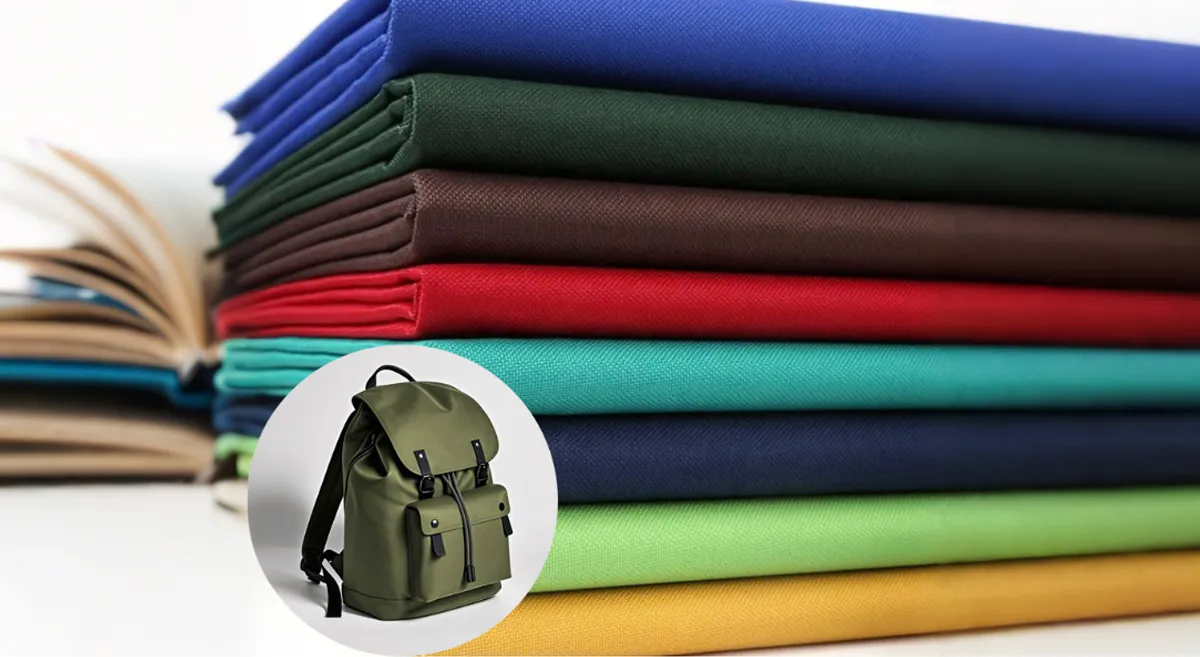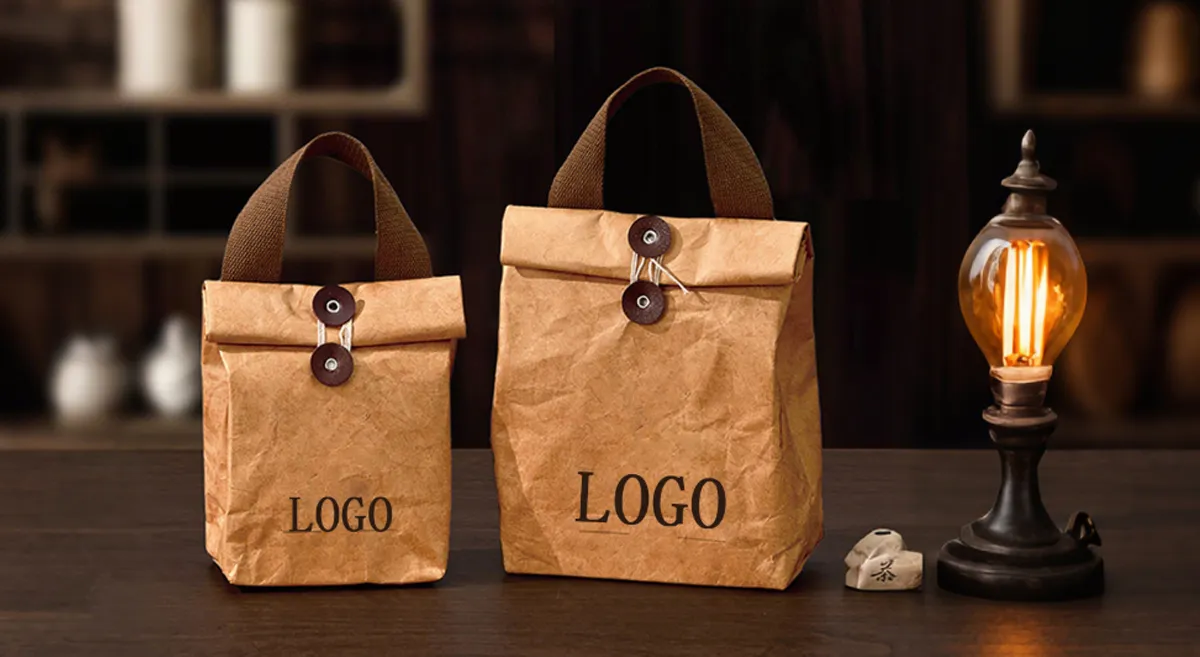
You may ask, “Are brown paper lunch bags biodegradable?” The answer is yes. Brown paper bags are a choice that nature can handle. Biodegradable means things like paper bags will rot with help from bacteria and fungi. Most brown paper lunch bags also break down in compost if they do not have plastic linings or lots of ink. You help the earth when you throw these bags away the right way.
Key Takeaways
- Brown paper lunch bags break down in nature. They are biodegradable and help lower waste.
- Composting brown paper bags gives nutrients back to the soil. This helps make the environment healthier.
- Pick bags that say “100% recycled” or “unbleached.” These are better for the planet.
- Do not use bags with plastic linings or lots of ink. These things stop the bags from breaking down.
- Look for BPI® certification on your bags. This shows the bags are good for composting.
- You can compost brown paper bags at home. Shred them and mix with food scraps.
- Use brown paper bags again for lunches or crafts. This helps save resources and makes less waste.
- Buy from companies that care about the planet. This helps keep the earth clean and cuts down on pollution.
Are Brown Paper Lunch Bags Biodegradable?
You might ask if brown paper lunch bags are biodegradable. The answer is yes. This makes them a good choice for people who want less waste. Using brown paper lunch bags helps the environment. These bags break down fast and safely. Most compostable brown paper bags turn into soil in a few months. They do not become harmful waste. This process does not leave toxic stuff behind like plastic does. If you want to help, use compostable paper bags. It is an easy way to make a difference.
What Biodegradable Means
Biodegradable means something can break down naturally. Bacteria, fungi, and other living things help with this. You do not need special machines or chemicals. Brown paper bags break down in nature. They give nutrients back to the soil. Here is what happens when you throw away a brown paper lunch bag:
- The bag starts breaking down in a few months.
- It does not leave anything harmful behind.
- The process gives nutrients back to the earth.
- This helps cut down on landfill waste and keeps soil healthy.
If you wonder if brown paper lunch bags are biodegradable, you can feel sure. They are made to disappear safely in nature.
Compostable vs. Biodegradable

You may see “compostable” and “biodegradable” on packages. These words are not the same. Compostable things break down into safe, rich soil. This happens in a compost bin with heat and moisture. Biodegradable things also break down. But sometimes they leave small bits or harmful stuff behind.
Here is a table to show the differences:
| Feature | Compostable Materials | Biodegradable Materials |
|---|---|---|
| Degradation Process | Needs special conditions like heat and water | Breaks down in many places like landfills or soil |
| End Products | Turns into rich soil | Might leave microplastics or toxic stuff |
| Environmental Impact | Safe for the earth | Sometimes bad because of byproducts |
When you pick compostable brown paper bags, your waste becomes useful for the earth. If you ask if brown paper lunch bags are biodegradable, check if they are compostable too for best results.
BPI® Certification and Standards
You may want to know if your brown paper lunch bags meet good standards. Look for the BPI® (Biodegradable Products Institute) label. This shows the bags passed tough tests for composting and biodegrading. BPI® certification means the product breaks down fast and safely in a composting place.
Here are the main rules for BPI® certification:
| Test Type | Method | Duration | Requirement |
|---|---|---|---|
| Disintegration Test | ISO 20200 (Lab-scale) | Three months | Over 90% of the bag must break into small pieces in 84 days. |
| Ecotoxicity Test | OECD 208 | Two months | The soil after composting must help plants grow and have little metal. |
| Biodegradation Test | ASTM D5338 (ISO 14855) | Six months | Over 90% of the organic carbon must turn into carbon dioxide in 180 days. |
| Total Fluorine Content | N/A | N/A | The bag must have less than 100 parts per million of fluorine. |
When you see the BPI® logo, you know the product meets these rules. If you ask if brown paper lunch bags are biodegradable, always look for this label. It helps you make the best choice for the planet.
Why Brown Paper Lunch Bags Break Down Easily
Materials Used
Unbleached and Recycled Paper
You might notice that most brown paper lunch bags use kraft paper. This material stands out for several reasons:
- Kraft paper is cost-effective.
- It is eco-friendly.
- Naturally brown in color.
- Sturdy and strong.
Kraft paper comes from wood chips. Manufacturers use a process that exposes these chips to intense heat to create pulp. Afterward, they screen, wash, and sometimes bleach the pulp to form the final product. When you choose bags made from unbleached or recycled paper, you help reduce the need for new raw materials. Unbleached paper keeps its natural color and avoids harsh chemicals. Recycled paper uses fibers from old paper products, which saves trees and energy.
Tip: Always check the label for “100% recycled” or “unbleached” when you buy paper bags. This small step supports a cleaner environment.
Absence of Plastic Linings
You may wonder why brown paper bags break down faster than other types. The answer lies in their simple design. These bags do not have plastic linings. Without plastic, the bags stay biodegradable and compostable. They break down naturally and do not leave harmful residues behind. Plastic bags, in contrast, can stay in the environment for hundreds of years. When you pick paper bags without plastic coatings, you make a choice that helps the planet.
Natural Decomposition Process
Brown paper lunch bags decompose quickly because of their natural materials. Microorganisms like bacteria and fungi find it easy to break down the fibers in these bags. Here is how the process works:
- Moisture and air reach the paper fibers.
- Microbes start feeding on the cellulose in the paper.
- The bag breaks into smaller pieces within weeks or months.
- The remains turn into nutrient-rich soil.
| Step | What Happens? | Time Frame |
|---|---|---|
| 1 | Moisture softens the fibers | Days |
| 2 | Microbes eat the cellulose | Weeks |
| 3 | Bag breaks into small bits | 1-3 months |
| 4 | Soil gains new nutrients | 2-6 months |
You can compost brown paper lunch bags at home or in a commercial facility. They add carbon to your compost pile, which helps balance food scraps and yard waste. When you dispose of these bags the right way, you help keep landfills smaller and soil healthier.
Note: Always remove any food residue before composting your bag. Clean bags break down faster and keep your compost healthy.
Exceptions to Biodegradability
Most brown paper bags break down fast. But some bags are different. You should look for things that stop your bag from being biodegradable. These things can also make composting or recycling tough.
Plastic Linings and Coatings
Some paper bags have a thin plastic layer. Makers add this to make bags stronger. It also helps the bag hold water better. If you see a shiny or waxy inside, it has plastic. This layer keeps out water and grease. But it also stops microbes from breaking down the bag.
- Plastic linings slow down how fast bags rot.
- Bags with plastic do not break down in compost.
- Most recycling places do not take bags with plastic.
Tip: Always look for a plastic-free label before you compost or recycle. If your bag has plastic, throw it in the trash, not the compost bin.
Inks and Dyes
Many brown paper bags have logos or designs printed on them. Some inks and dyes have chemicals that do not break down fast. Bright colors or lots of printing can leave stuff in your compost or soil.
| Ink Type | Compostable? | Environmental Impact |
|---|---|---|
| Water-based | Yes | Low |
| Soy-based | Yes | Very low |
| Petroleum-based | No | Can leave toxins |
If you want to compost your bag, pick bags with water-based or soy-based inks. These inks break down and do not hurt the soil. Stay away from bags with lots of glossy or shiny printing.
Additives and Treatments
Some paper bags get extra stuff to make them stronger. These can be wax, sizing agents, or chemicals. These things help the bag hold food or liquids. But they also make the bag less biodegradable.
- Wax coatings slow down how fast bags rot.
- Chemical additives can leave things you do not want.
- Treated bags often do not pass composting tests.
Note: If you want a biodegradable bag, pick plain, untreated brown paper bags. These bags break down fast and help the soil.
You can make better choices by checking for plastic, safe inks, and plain paper. This helps the earth and makes composting or recycling easier.
How to Dispose of Brown Paper Lunch Bags Responsibly
Composting at Home and Commercial Facilities
You can compost brown paper lunch bags at home or in a commercial facility. Composting helps turn waste into useful soil. If you want to compost at home, follow these steps:
- Shred the bag into small pieces. This helps it break down faster.
- Remove any food scraps, tape, or stickers. Clean bags keep pests away and prevent odors.
- Mix the shredded paper with fruit peels, grass clippings, or other nitrogen-rich materials. This keeps your compost balanced.
- Add the mixture to your compost pile and turn it often.
Most compostable paper bags break down quickly in a compost bin. If your bag has printing, you can still compost it if it does not have plastic lining or glossy ink. Commercial composting facilities use higher temperatures and special equipment. These places can handle larger amounts and break down bags even faster.
Tip: Always check for plastic linings before composting. Bags with plastic do not break down and can harm your compost.
Recycling Guidelines
You can recycle brown paper lunch bags if they are clean and dry. Recycling helps save trees and energy. Before you recycle, check your bag for food stains, grease, or sticky labels. These things make recycling harder. Here is what you should look for:
- Food residues like grease or sauces
- Tape or stickers
- Handles or metal clasps
If your bag has any of these, remove them before recycling. Clean paper bags go in your recycling bin. If you cannot clean the bag, compost it instead. Recycling centers sort and process paper bags to make new products.
| Step | What to Do |
|---|---|
| 1 | Check for food stains |
| 2 | Remove tape or stickers |
| 3 | Place in recycling bin |
Note: Recycling works best when you keep bags free from food and non-paper items.
Landfill Impact
If you throw brown paper lunch bags in the trash, they end up in a landfill. Landfills slow down the breakdown of biodegradable materials. Brown paper bags can decompose over time, but the process takes longer than composting. Waste piles up and takes up space. Composting turns bags into valuable soil conditioners and helps the earth. Recycling also helps, but composting gives the most benefit.
- Composting transforms bags into healthy soil.
- Recycling saves resources and energy.
- Landfills cause waste to build up and slow decomposition.
You help the planet when you choose composting or recycling. Avoid sending paper bags to landfills whenever possible.
Callout: Choose composting or recycling for your brown paper lunch bags. You make a positive impact on the environment.
Eco-Friendly Choices and Best Practices
Choosing 100% Recycled or Unbleached Bags
Picking 100% recycled or unbleached brown paper lunch bags helps the earth. These bags are good for the environment and help cut down on trash. They come from resources that can grow back, like trees. Over time, these bags break down in nature. When you choose bags made from recycled fibers, you help keep the planet safe.
- Made from resources that grow back, which helps nature.
- Biodegradable and able to rot, which means less trash.
- Cuts down on plastic pollution that hurts sea animals and habitats.
- Usually recyclable, which saves resources and lowers pollution.
- Puts less stress on landfills than plastic bags.
Tip: Check for labels that say “100% recycled” or “unbleached” when you buy lunch bags. This easy step helps you keep the earth clean.
Reusing Brown Paper Lunch Bags
You can use brown paper lunch bags more than once. Many bags stay strong after you use them. You can use them again for lunches, snacks, or as gift bags. Reusing bags saves money and makes less trash. You also save resources by using each bag more than once.
Try these ways to reuse your bags:
- Pack another lunch or snack.
- Store small things like craft items or tools.
- Use as wrapping for gifts or books.
- Make crafts or art at home or school.
Callout: Every time you reuse a bag, you help lower the need for new bags and keep trash out of landfills.
Supporting Sustainable Manufacturers
You help the earth when you pick paper bags from green companies. These companies use smart ways to protect nature and stop pollution. Many follow strict rules to make sure their products are safe for you and the planet.
| Manufacturer | Product Features | Certifications |
|---|---|---|
| Duro | Special bags for food, bags with handles, compostable bags, bags made with recycled stuff | BPI Certified Compostable |
Green companies get materials from forests that are managed well or use recycled stuff. Many use water recycling to save resources. They also try to make less trash by recycling and using materials wisely. You can trust these companies use safe chemicals and check how their products affect the earth.
Note: When you buy from green brands, you help make the industry better and push more companies to use earth-friendly ways.
Conclusion
Choosing brown paper bags for lunch helps the planet. These bags break down fast and are good for composting. They also help cut down on trash. Many cities now ask people to use recycled bags to stop plastic pollution. Here are some things to know:
| Feature | Description |
|---|---|
| Compostable | Changes into soil in a few months. |
| Eco-Friendly Option | Made from materials that can be recycled and replaced. |
Throw away bags the right way and pick brands that care about the earth. You can contact us if you want custom or wholesale paper lunch bags at factory prices.
FAQ
Can you compost brown paper lunch bags at home?
Yes, you can compost brown paper lunch bags at home. Shred the bag and mix it with food scraps or yard waste. Make sure the bag does not have plastic lining or heavy ink.
Do brown paper lunch bags contain chemicals?
Most brown paper lunch bags use natural kraft paper. Some bags may have additives or dyes. You should check labels for “unbleached” or “chemical-free” to ensure safety.
Are brown paper lunch bags safe for food storage?
You can safely use brown paper lunch bags for dry foods. Avoid storing wet or greasy foods unless the bag is food-grade and uncoated. Always check for food-safe certification.
How long does it take for a brown paper lunch bag to decompose?
A brown paper lunch bag usually decomposes in two to six months in compost. The process depends on moisture, temperature, and whether you shred the bag first.
Can you recycle brown paper lunch bags with food stains?
You should not recycle bags with heavy food stains. Compost these bags instead. Clean and dry bags go in your recycling bin.
Do brown paper lunch bags break down in landfills?
Brown paper lunch bags break down slowly in landfills. Lack of air and moisture slows decomposition. Composting or recycling works better for the environment.
What should you look for when buying eco-friendly paper bags?
Choose bags labeled “100% recycled,” “unbleached,” or “BPI® certified compostable.” Avoid bags with plastic linings, glossy coatings, or petroleum-based inks.
Can you reuse brown paper lunch bags?
You can reuse brown paper lunch bags if they stay clean and undamaged. Use them for lunches, crafts, or storage. Reusing helps reduce waste.




